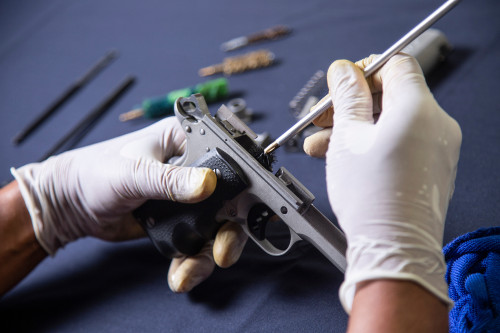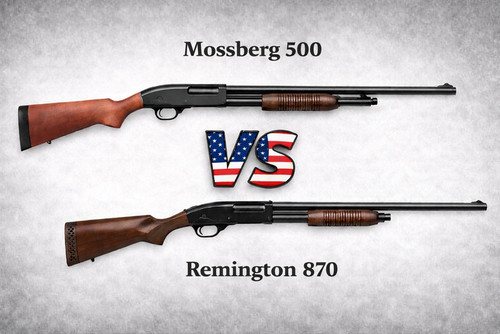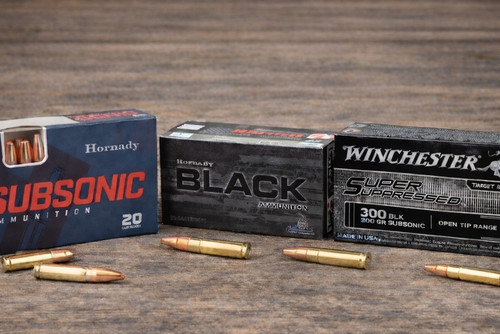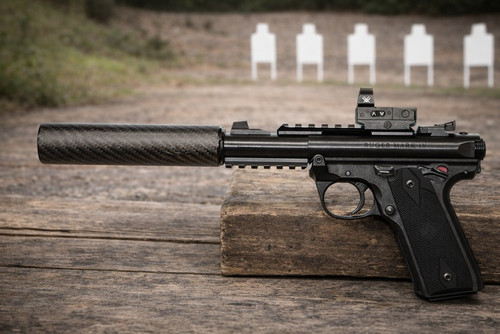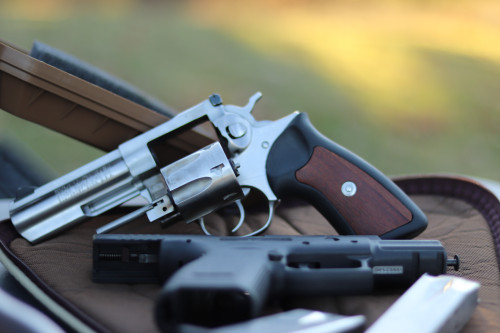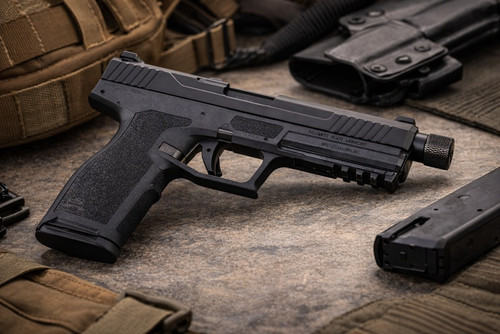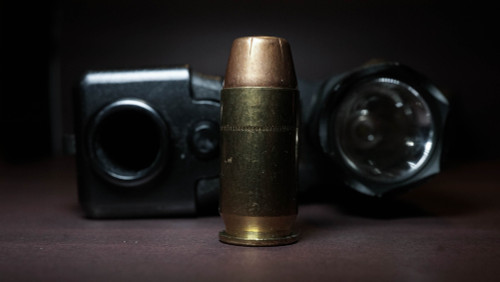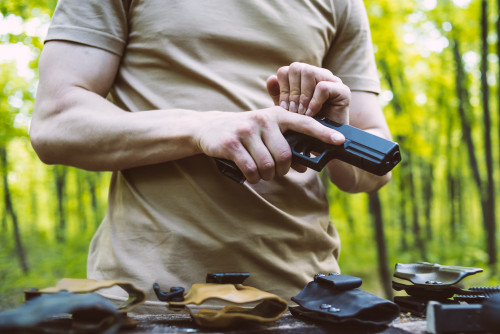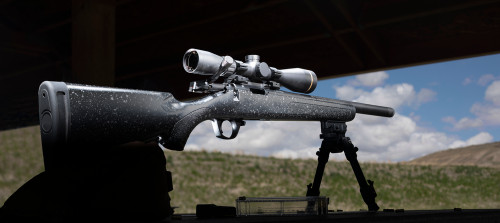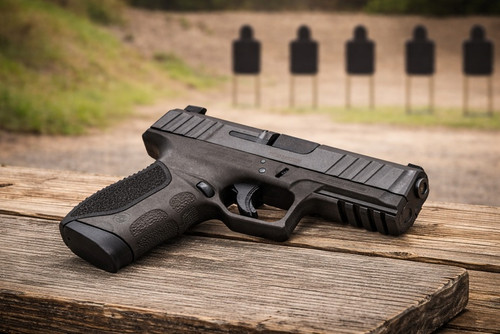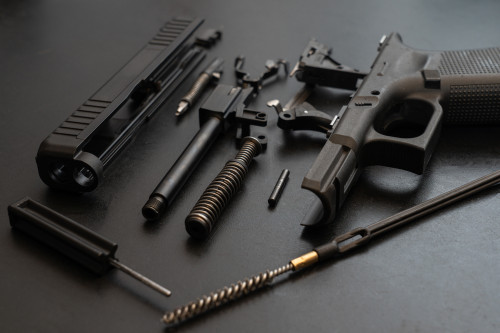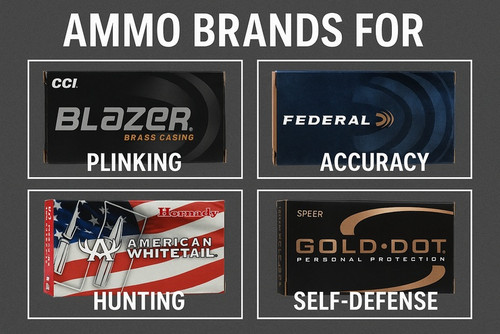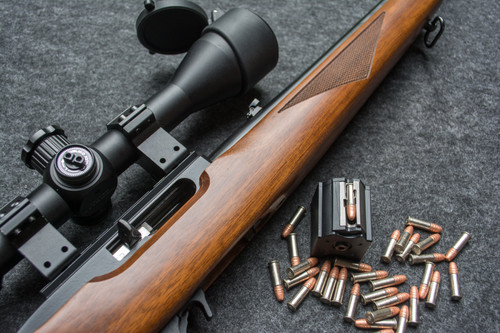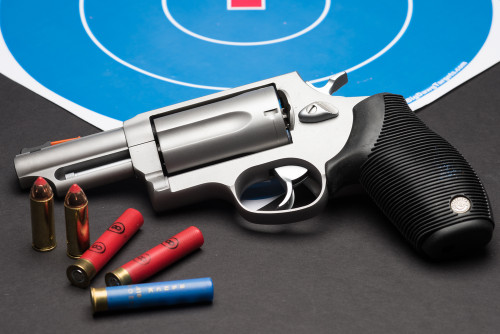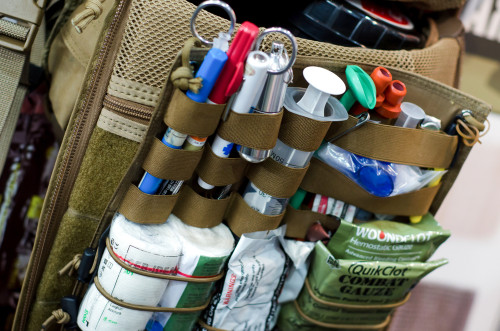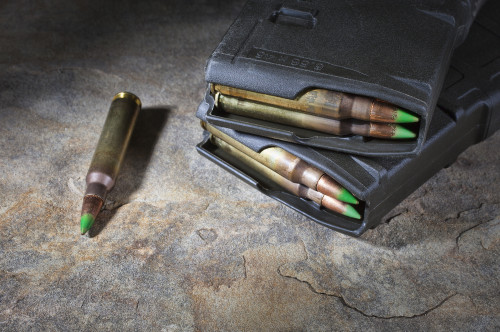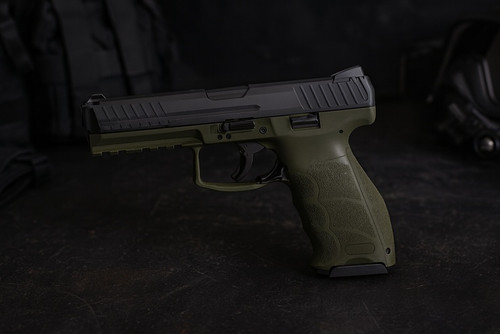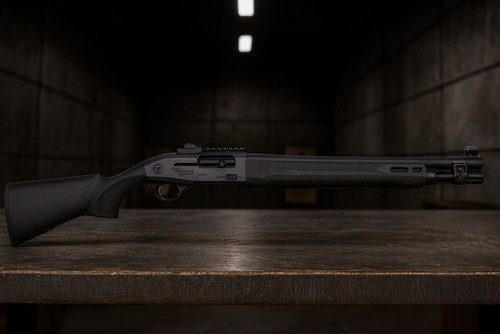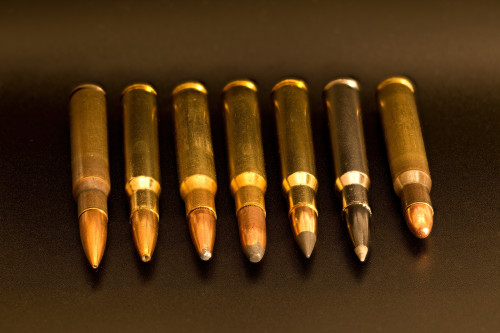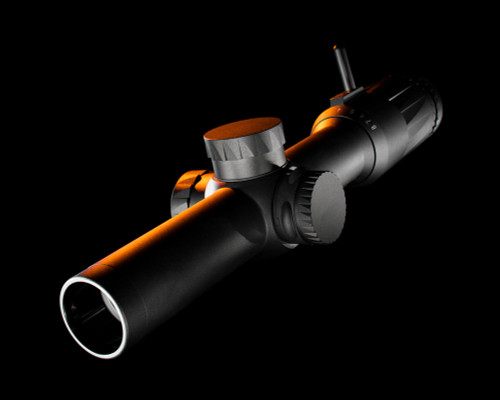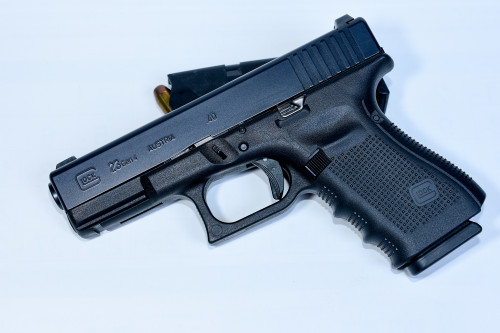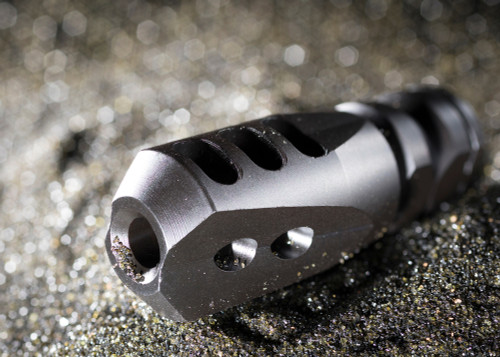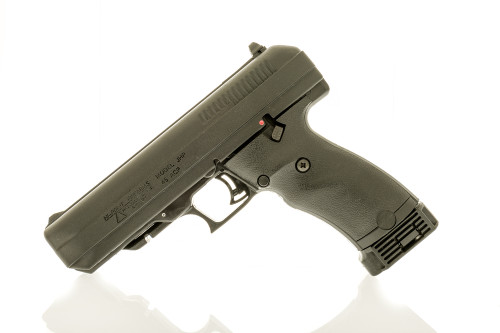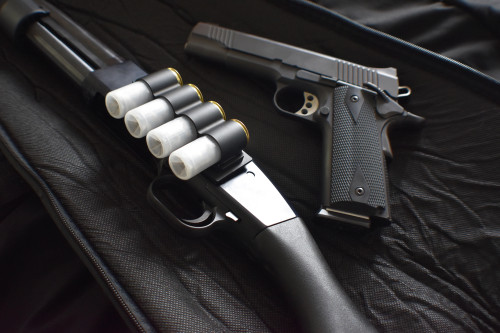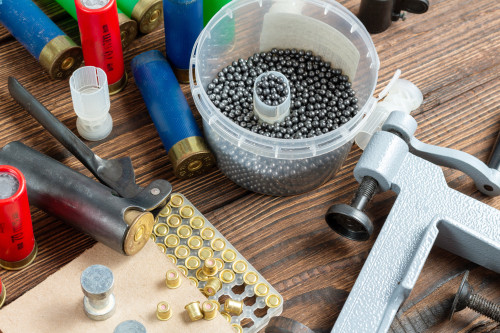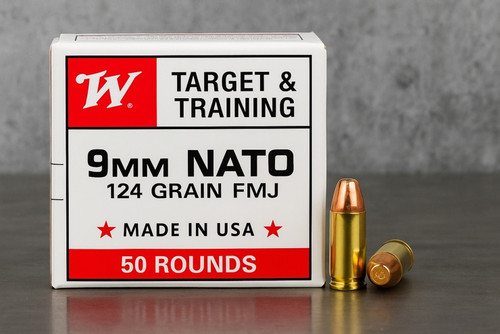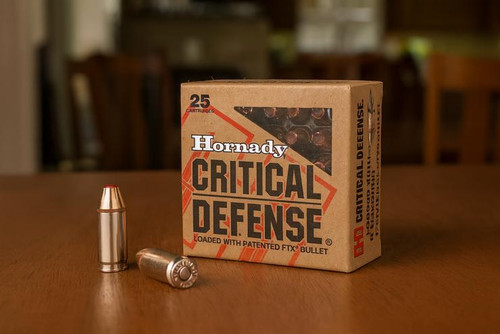It’s a question every new gun owner asks themselves at some point: how do I clean my gun? In fact, you’re probably standing in your garage right now with your gun in one hand and your phone in the other, Googling that very question. You might be wondering:
- Should I use an old rag or a towel?
- What kind of brush should I use?
- What kind of cleaning liquid is best?
- Do I need to take it apart?
- What the heck do I do first?
If you’re going to own firearms, proper cleaning is a practice you need to know about so you can do it often. Fortunately, it doesn’t need to be a hassle. It can even be a calming act sometimes.
Here’s an overview of how to clean a gun, including how to use cleaning kit tools like a bore brush and snake, when and where to apply lube, and how often to tidy up your gat.
How Often Should I Clean My Gun?
The frequency with which you clean your firearms will depend on their purpose. Here are a few general rules to stick with:
- EDC Defensive Pistol - Clean it every time you shoot it, or once a month, whichever is more frequent. If your life depends on it, keep it clean.
- Range Toy - Clean it every 500 to 1000 rounds — the occasional misfire is no big deal.
- Competition Rifle or Pistol - Clean it before each match.
- Hunting Rifle - Clean it at least once per season, but preferably before every trip.
- Shotgun - Clean it every 300 to 500 rounds, but preferably every hunting trip.
- AK-Pattern Rifle: Never! Fill it with rocks, and it’ll still fire. This is a joke, of course. You should clean it every 500 to 1000 rounds. However, some people do go long spans of time without cleaning their AKs — we’re talking like 5,000 rounds.
Do I Need a Gun Cleaning Kit?
Short answer: yes.
It would be very difficult (if not impossible) to clean a gun without a kit. Fortunately, you don’t need a separate kit for every gun — just every caliber. If you’re a Glock fanboy, you can breathe easy.
Additionally, some parts from certain kits may be interchangeable. For example, you may be able to use the cleaning rod from a .45 Auto cleaning kit with a bore brush from a 9mm kit, although this isn’t exactly a set-in-stone rule. You can also find some “universal” kits that contain interchangeable parts for multiple weapon calibers.
Gun kits generally contain the following tools:
- Bore Brush: A tubular brush typically made of bronze, used to clean the inside of the barrel.
- Cleaning Rods: Attach a bore brush to the cleaning rod to push it through a gun’s entire barrel.
- Cleaning Brush: This looks like a toothbrush for your dog. One end has a rectangular brush head, while the other has a smaller, narrower brush head for cleaning in tight grooves. Generally, you want to use nylon bristles, unless you’re working on stainless steel.
- Cotton Swabs: Use these to apply cleaner and lube in hard-to-reach places.
- Cleaning Patches: These fabric squares are used to remove carbon fouling after scrubbing it off with a brush.
- Patch Accessories: Attach these to a cleaning rod to push cleaning patches through the inside of the barrel. Examples include a slotted holder or a jag. They may be made from brass or plastic.
- Bore Snake: A more-sophisticated version of the classic bore brush and cleaning rod.
How To Clean a Gun: The Five-Step Guide
Step One: Confirm the Gun Is Unloaded
According to the CDC, about 550 people die each year from preventable/accidental firearm discharge. Don’t be one of those people. Check to ensure a firearm isn’t loaded every time you pick it up, but especially when cleaning it. Some guns (like Glocks) require you to pull the trigger to take them apart, and you want to avoid negligent discharges.
Step Two: Disassembly
This is the main step that will differ between firearms. Fortunately, your gun most likely came with a manual that can tell you how to take it apart. There are also plenty of guides on YouTube that can teach you how to disassemble your weapon.
There are, however, certain similarities between disassembling the same types of guns. They include:
- Semi-Auto Pistols: Removing the slide from the frame is standard protocol for most of these firearms. Barrels usually come out of the slide, too. For routine cleanings, do not remove the firing pin from the slide.
- Bolt Action Rifles: One of the easiest guns to clean, simply remove the bolt from the barrel and you’re ready.
- Shotguns: You’ll frequently want to remove the barrel from the receiver when disassembling shotguns. If your shotgun uses interchangeable chokes, you’ll want to remove it when cleaning the barrel.
- Semi-Auto Rifles: These firearms use the most diverse types of actions. Short stroke piston, long stroke piston, and direct impingement systems all function in different ways, so disassembly will be different.
- Revolvers: The great thing about revolvers is that you don’t really need to take them apart to clean them. Just pop the cylinder open, and you’re good to go.
Step Three: Clean
If possible, use some kind of CLP (Cleaner, Lubricant, Preservative) product. For most applications, this stuff works great. Many shooters use a spray CLP, directing some straight into the places that need to be cleaned and/or lubricated. That includes any rails that interact with each other (like the ones that hold a pistol frame to the slide), the inside of your barrel, and anywhere else you can see carbon buildup.
Some CLPs are liquids/oils. In that case, you can apply some to a cloth or patch and wipe it over your firearm. If you use a separate cleaner and lubricant, clean the entire gun first.
In some instances (like if you’re cleaning an older or expensive firearm, such as an M1A), the manufacturer will tell you to use a specific brand. For example, Springfield’s M1A manual says to use Shooter’s Choice products.
One place you’ll want to pay special attention to is the inside of the barrel, or “bore.” If you’re cleaning a pistol, pick up a bore brush in the correct caliber to scrub away any built-up crud. You can absolutely use bore brushes on other types of firearms, but there’s another option that works even better.
If you’re cleaning a rifle or shotgun, invest in a tool called a “bore snake.” This is a piece of fabric with a bore brush built in. You can apply a cleaner directly to the bore snake, pull it through the barrel a few times, and voila — instantly clean. Check out this slick bore snake for your AR-15.
Cleaning Magazines
Side note: don’t forget to clean your mags! Dirty mags are one of the main sources of jammed firearms. It’s also a common reason for pistol slides to close on an empty chamber. If your slide used to stay open on an empty chamber but now slides closed, clean those mags!
Step Four: Lubricate
As the old saying goes, use urine for everything that rotates and spit for everything that slides. That’s how Grandpa cleaned his guns, right?
Not exactly. All humor aside, if you use a CLP product, you generally won’t need to separately lubricate your guns as a separate process. If you don’t use a CLP, use oil for everything that rotates, grease for everything that slides.
After you shoot it for a while, your gun will start to show you where it needs lubrication. As a general rule, you’ll want to lubricate anywhere metal touches metal. On a semi-auto handgun, you’ll also want to hit the outside of the barrel on the muzzle end, where the barrel tilts up and rubs against the slide. Don’t forget to lube your springs!
That said, there are a few places lubricants definitely don’t belong. For one, you don’t want to lube your firing pin or firing pin channel. You also shouldn’t lubricate the inside of your barrel or chamber unless you’re planning on storing the gun for a long period of time.
Once you’re finished, wipe everything down thoroughly. You don’t want leftover lube collecting carbon fouling and jamming your gun.
Can You Use WD-40 on Guns?
A lot of people across the internet ask the same question: can you use WD-40 on guns? The short answer: yes. Although it may sound like an urban legend, it’s 100% safe and effective. You can safely and confidently use WD-40 to clean your guns.
However, this answer opens a whole can of worms. If you can use WD-40 on your guns, what other kinds of non-gun-specific products can you use with your firearms? There are a lot, actually. For example, you can use brake cleaner to clean your gun in a pinch. However, you need to remember to thoroughly lube it afterwards.
You might even see people use ketchup to clean their guns. It’s not the most orthodox method, but it can work. Most ketchup contains vinegar, which is great at breaking down the gunk that fouls up your gun’s action.
That said, it’s usually best to use a material specifically designed for use with guns, just because you know its intended purpose and design is to give you a clean, well-lubricated gun.
Step Five: Reassemble and Check Functions
After you apply lube (if necessary), reassemble your firearm. If your instruction manual doesn’t have reassembly instructions, just perform the disassembly process, but backwards.
Once you’ve put the firearm back together, it’s time for a function check. This is essentially an “idiot check” to make sure you reassembled the gun correctly. Rack the gun a few times and pull the trigger. Feel for any irregularities, like unusual resistance or a hammer/striker that won’t cock. If it’s moving right, you did a good job. If not, you might want to take it apart and clean it again.
Final Thoughts
If you want to keep your guns firing flawlessly, the most important thing you can do is keep them clean. If you follow these five simple steps, you should be able to do that safely, quickly, and effectively.
While this is just a general overview of how to clean your gun, there are a lot more details to learn. At Pro Armory, we’re doing more than just selling ammo and accessories. We’re also helping spread knowledge about the safe, effective use of firearms. If you’re interested in learning more specifics, including gun cleaning tricks, gun safety, tactical training, and more, check out our firearms training courses. Sign up for our newsletter to be notified when training officially launches.



